Projects: Bureau Plat Diplomatic Luigi XV - Woodworking
Images relating to the implementation of the WOODWORK and veneering
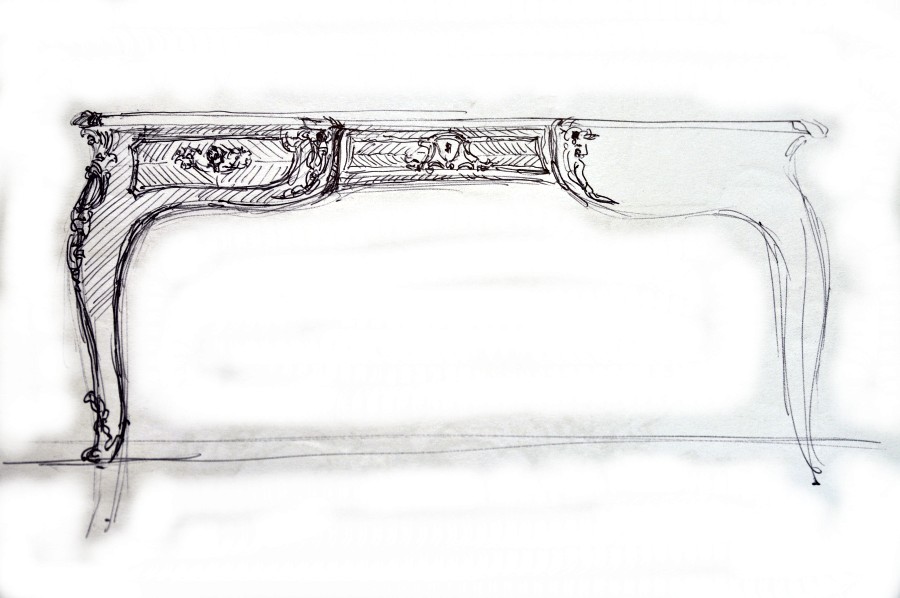 Fig. 20 - Preparatory drawings.
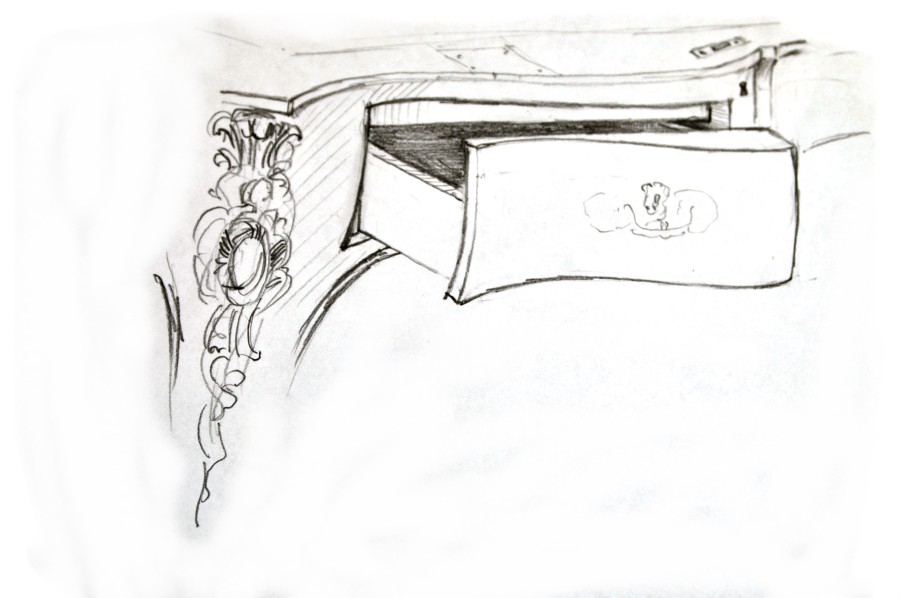 Fig. 21 - Preparatory drawings.
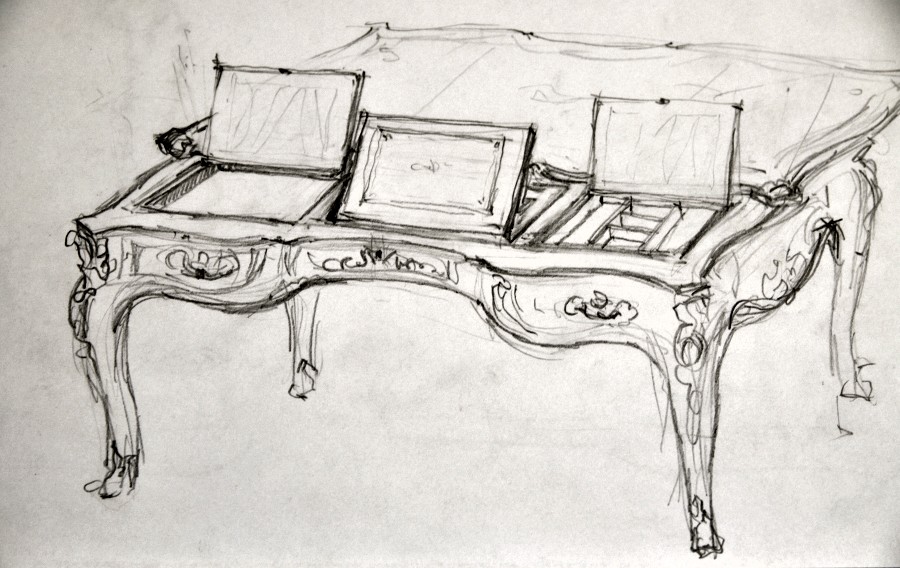 Fig. 22 - Preparatory drawings.
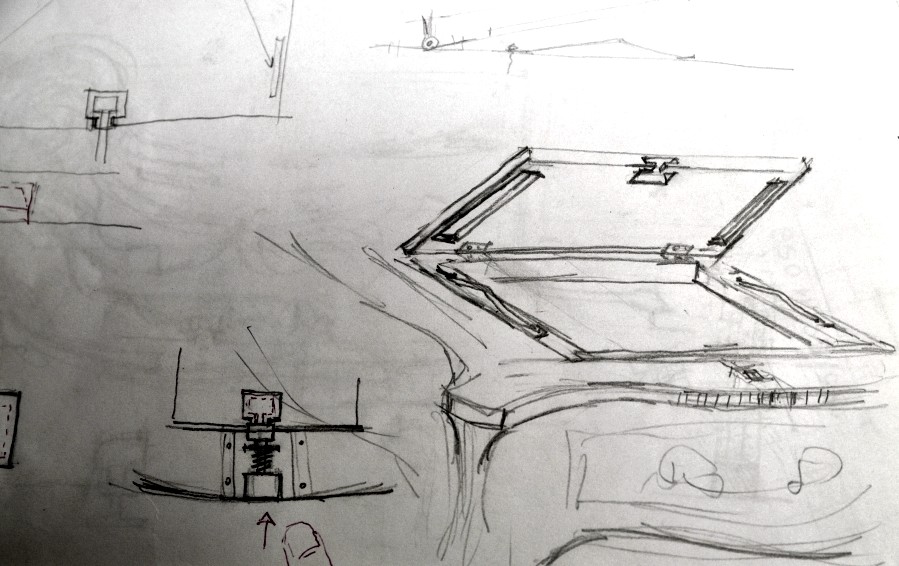 Fig. 23 - Preparatory drawings.
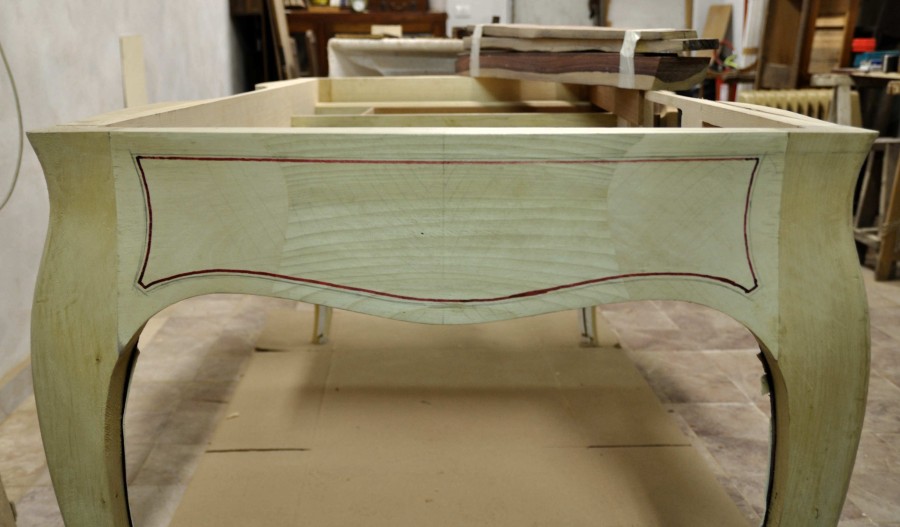 Fig. 24 - After building the frame of the desk, we can start to paste the veneers.
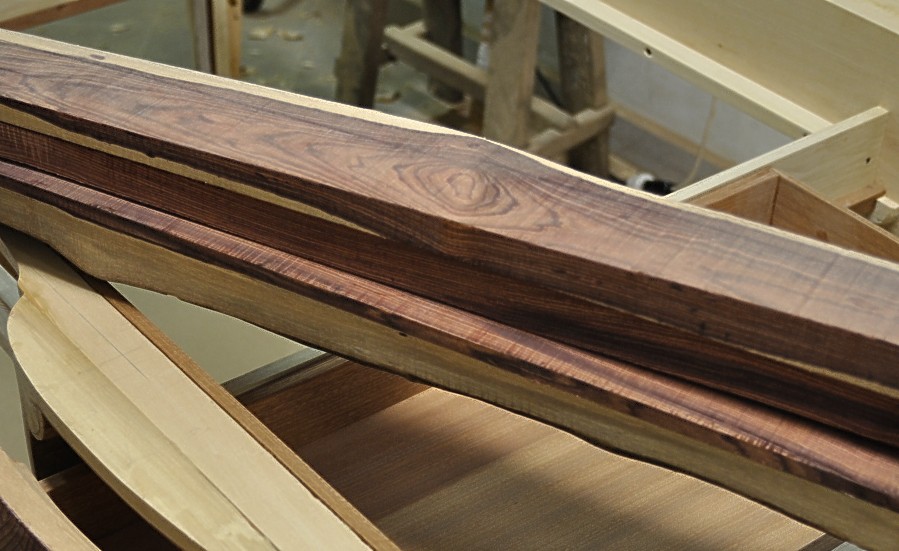 Fig. 25 - We cut the veneer from the "violetto" tree trunk.
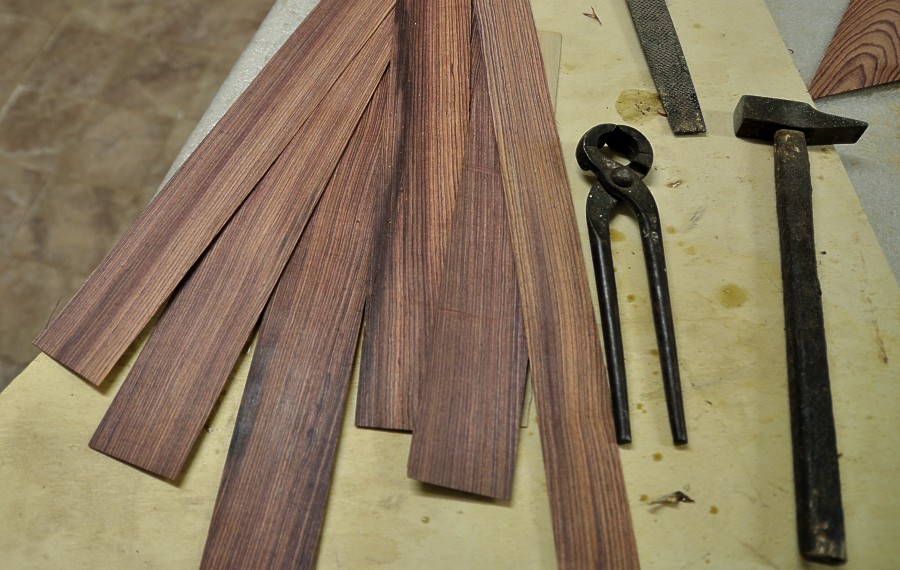 Fig. 26 - We cut the veneer from the "violetto" tree trunk.
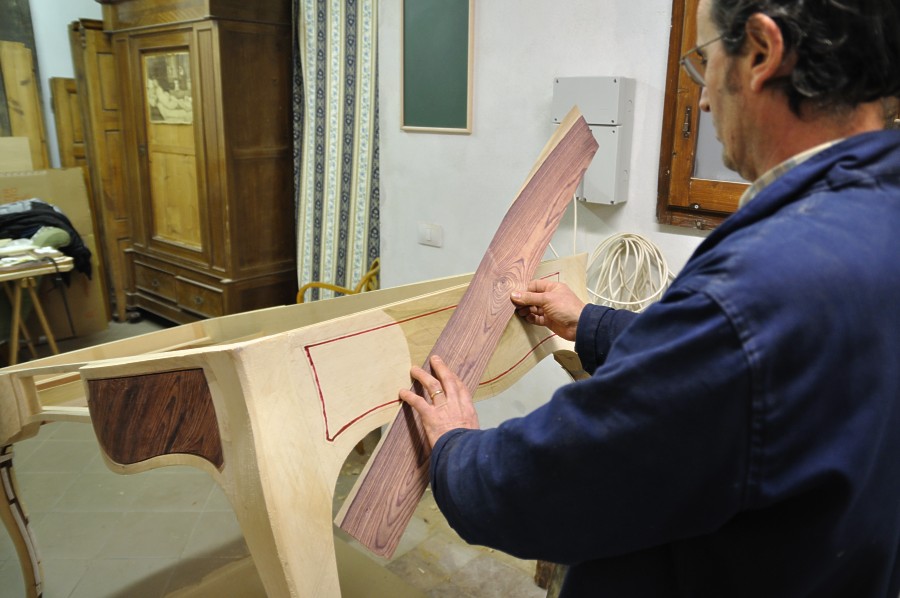 Fig. 27 - We try to find the most appropriate wood grain to create the desired effect.
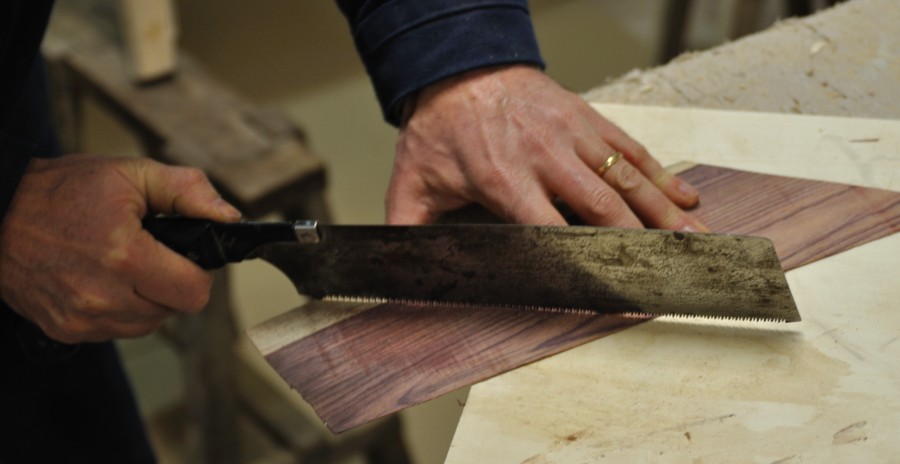 Fig. 28 - We cut it in the desired inclination, always with manual tools to inflict the least damage and to have the fewest possible scrap.
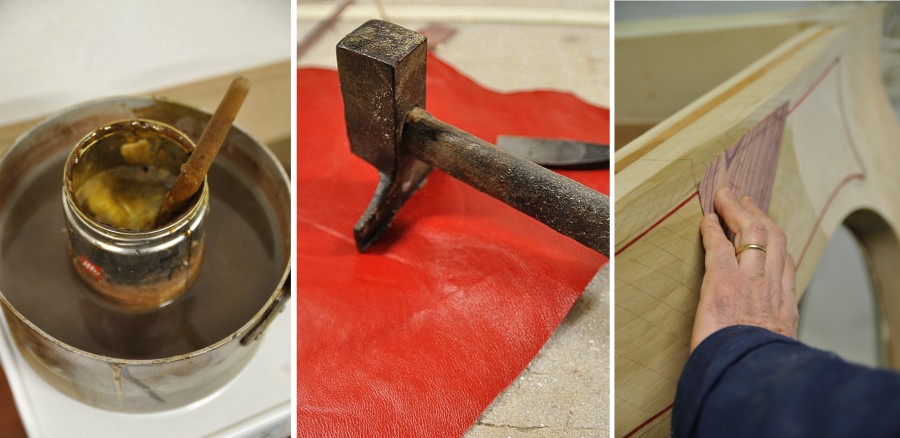 Fig. 29 - The "old" strong carpenters glue (hot animal glue) is essential for manual pasting.
The tool used to adhere the lystra to support, after having spread the glue on both sides, is a particular large hammer called "martellina".
The action must be energetic and quick: we must slide the hammer with strong.
For a successful pasting this operation must be carried out in seconds to not allow the glue to solidify.
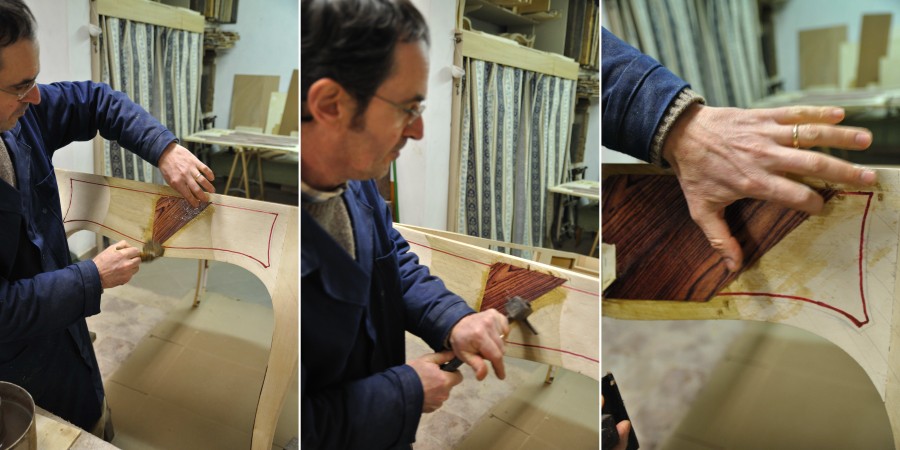 Fig. 30 - The "old" strong carpenters glue (hot animal glue) is essential for manual pasting.
The tool used to adhere the lystra to support, after having spread the glue on both sides, is a particular large hammer called "martellina".
The action must be energetic and quick: we must slide the hammer with strong.
For a successful pasting this operation must be carried out in seconds to not allow the glue to solidify.
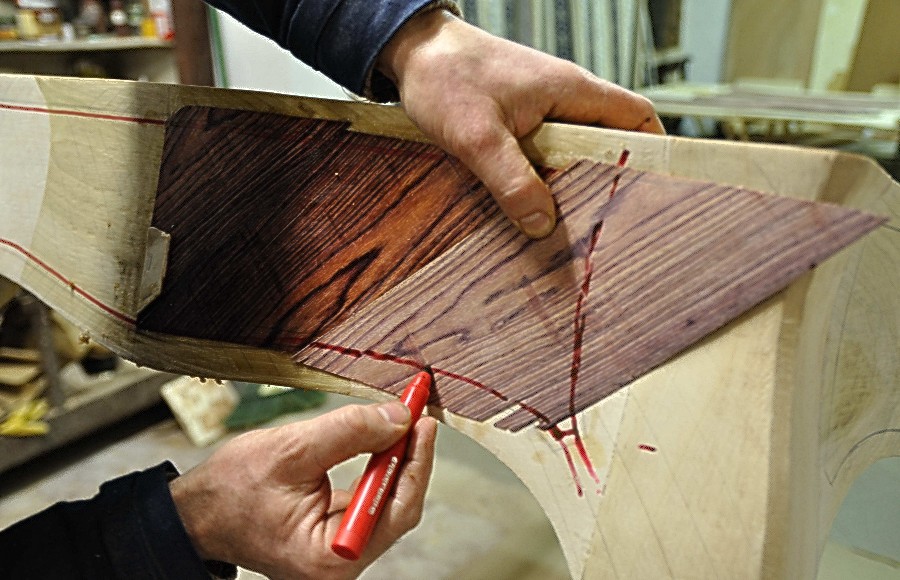 Fig. 31 - Choosing and cutting a piece of veneer.
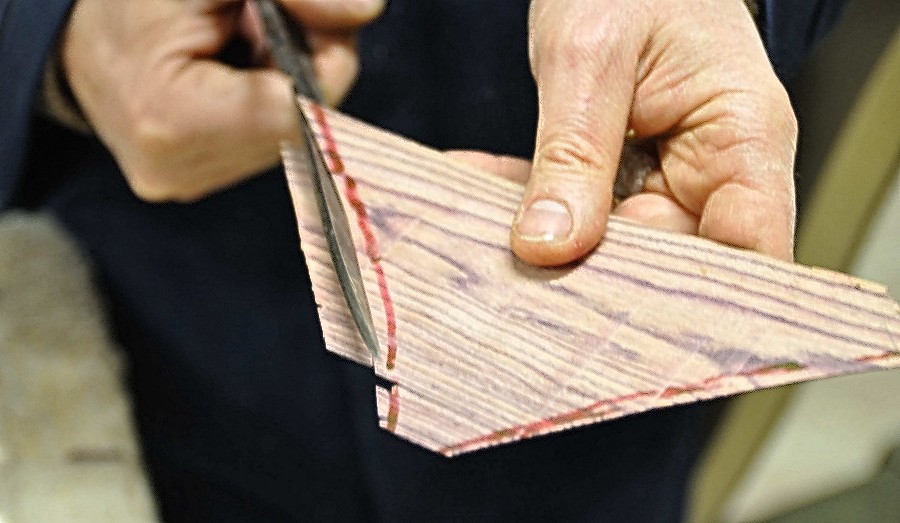 Fig. 32 - Choosing and cutting a piece of veneer.
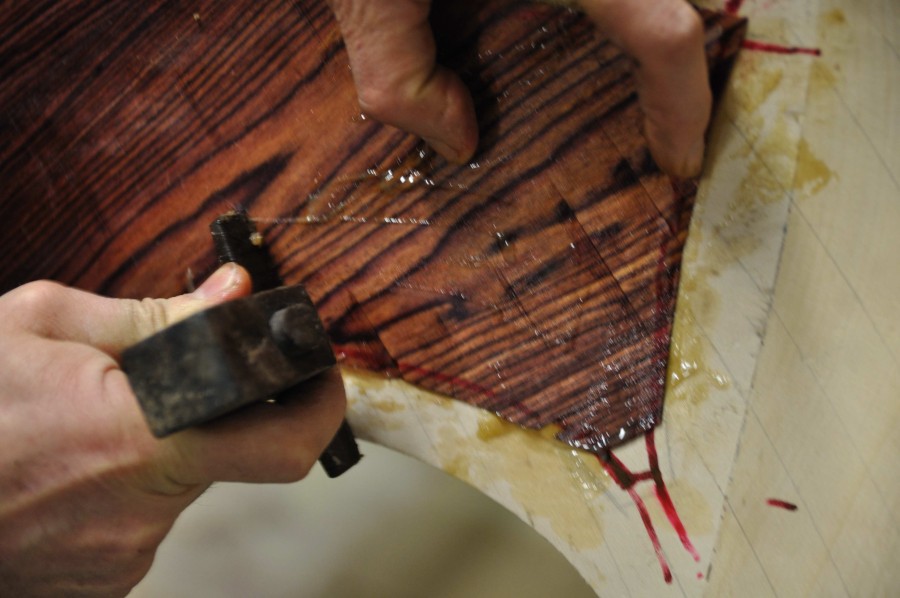 Fig. 33 - The "old" strong carpenters glue is essential for manual pasting.
The tool used to adhere the lystra to support, after having spread the glue on both sides, is a particular large hammer called "martellina".
The action must be energetic and quick: we must slide the hammer with strong.
For a successful pasting this operation must be carried out in seconds to not allow the glue to solidify.
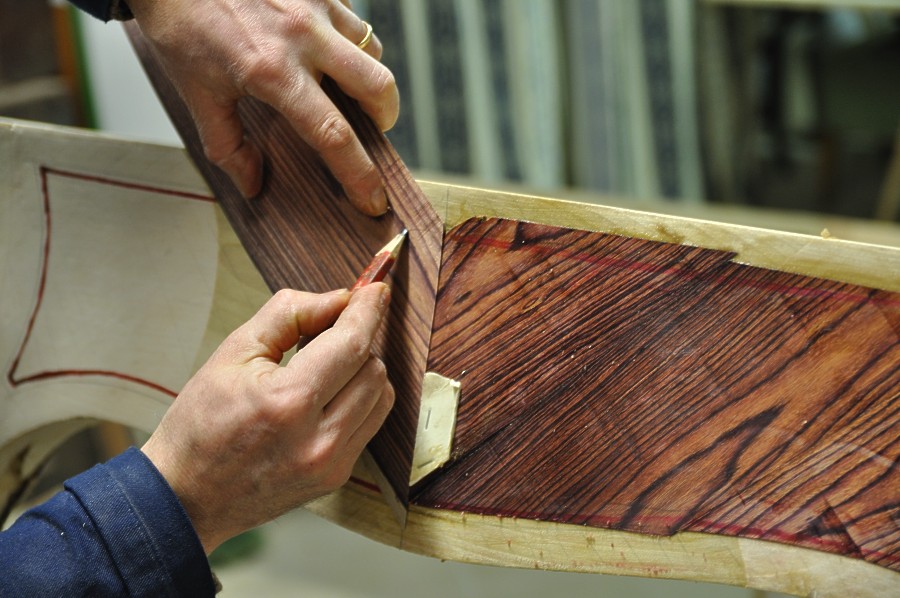 Fig. 34 - One of the peculiarity of 18th-century furniture is the random arrangement of wood grain.
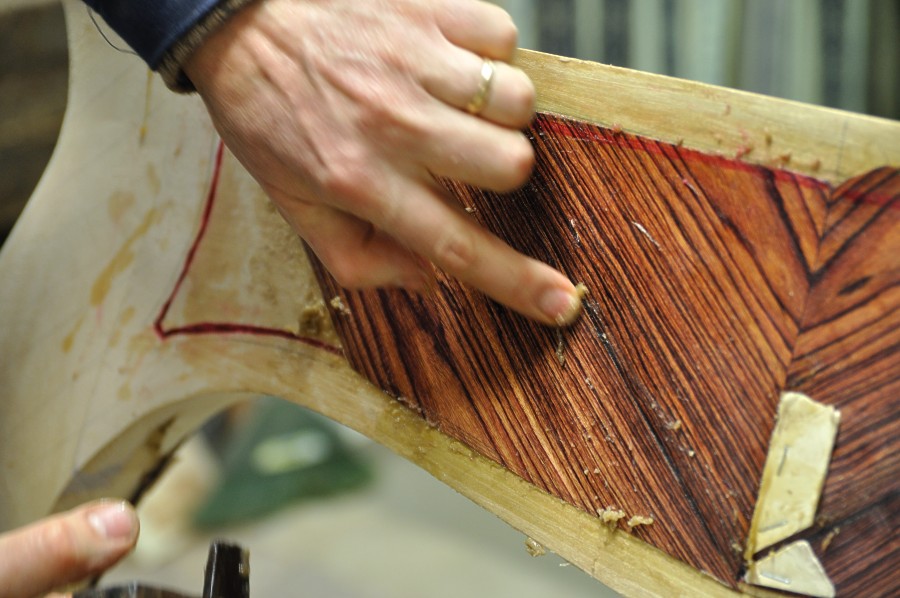 Fig. 35 - One of the peculiarity of 18th-century furniture is the random arrangement of wood grain.
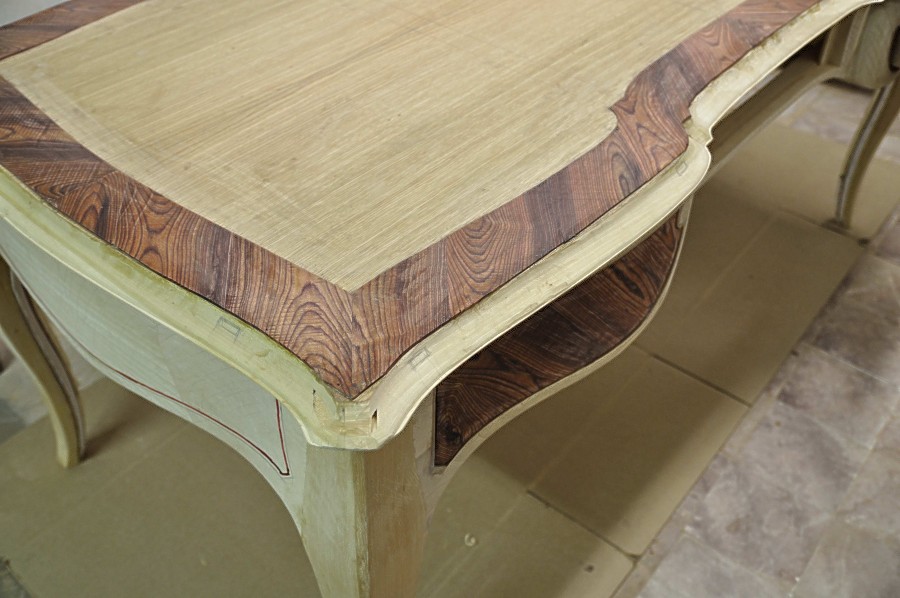 Fig. 36 - Details of lystra: particularly massive.
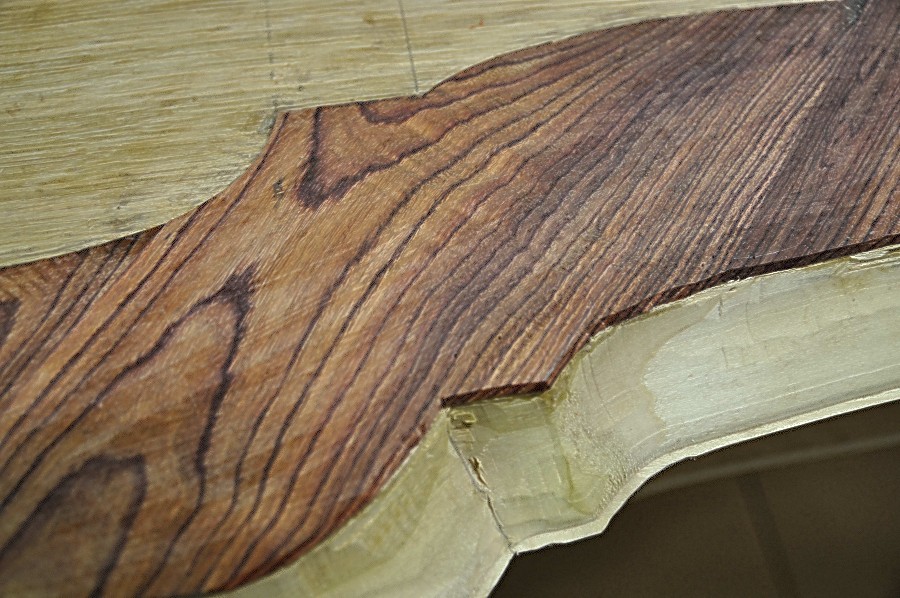 Fig. 37 - Details of lystra: particularly massive.
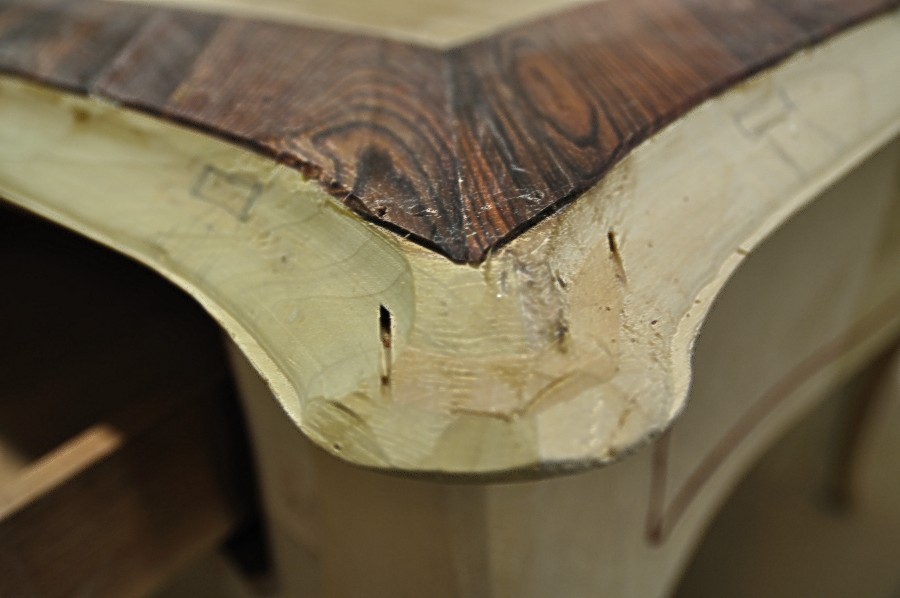 Fig. 38 - Details of lystra: particularly massive.
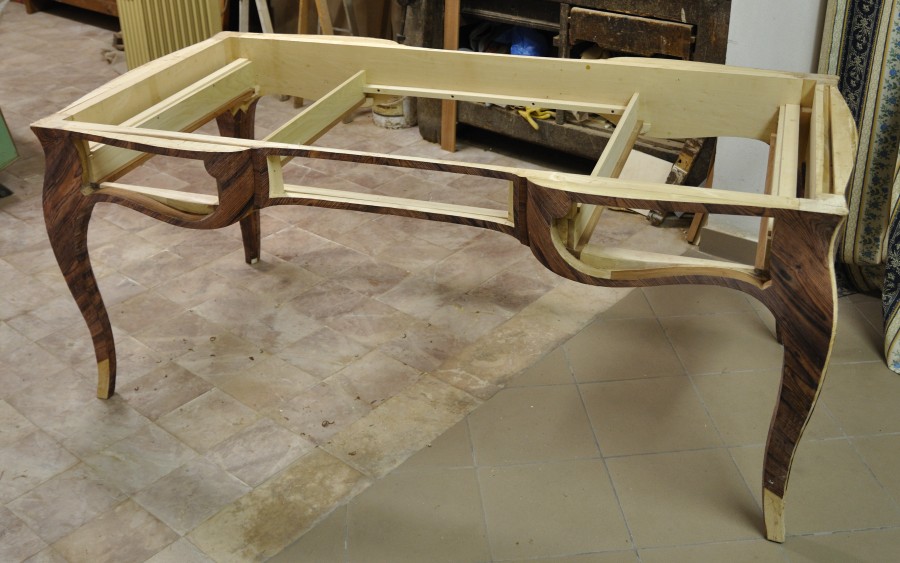 Fig. 39 - The frame of the desk almost entirely veneered.
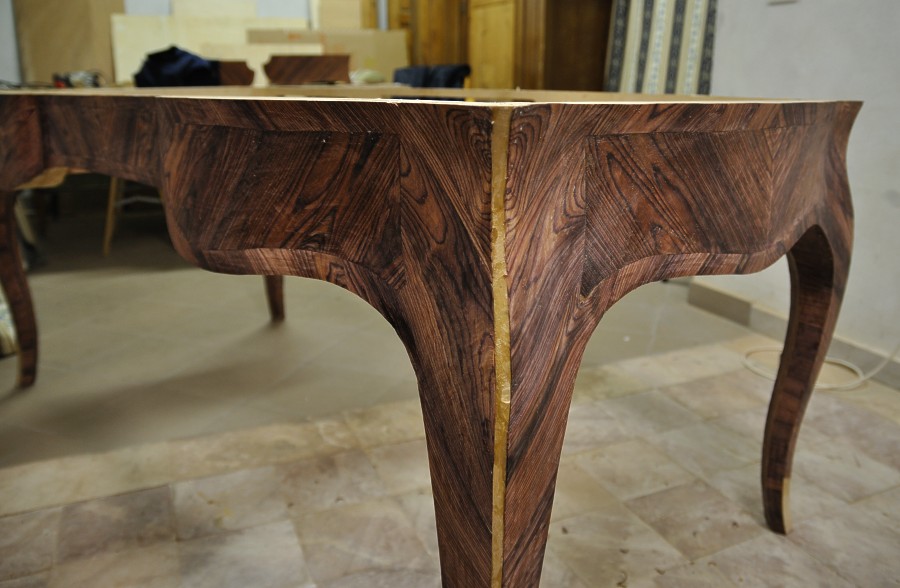 Fig. 40 - The frame of the desk almost entirely veneered.
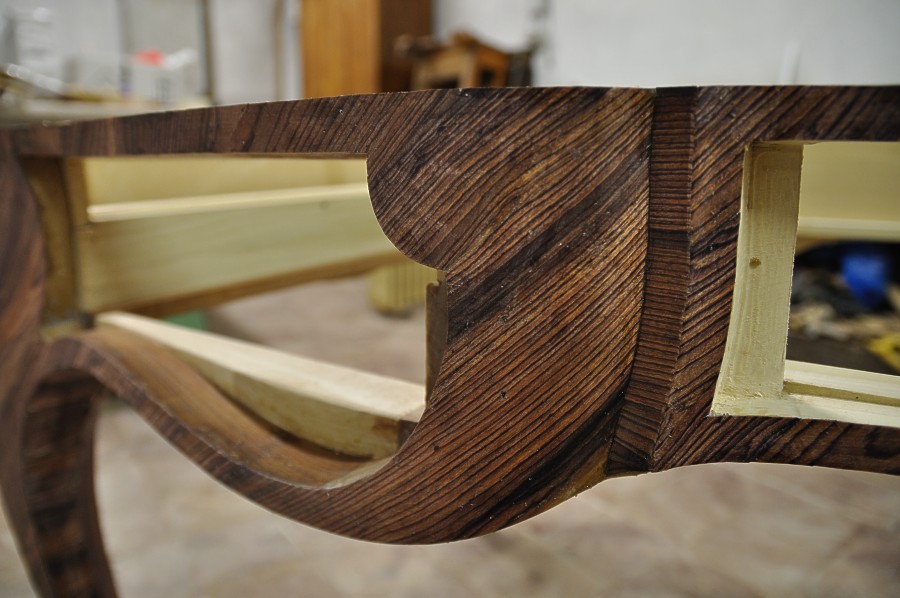 Fig. 41 - Detail of lystra applied near the drawer. To reinforcing the perspective effect the inclination of the grain must change direction.
|

